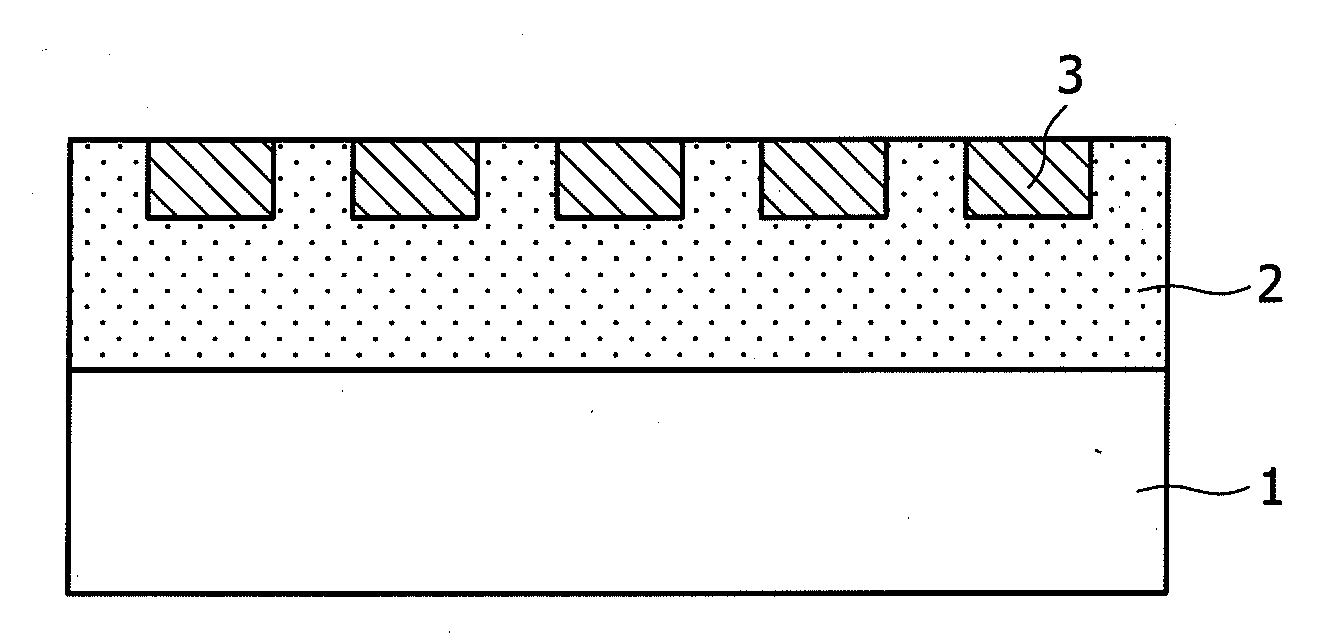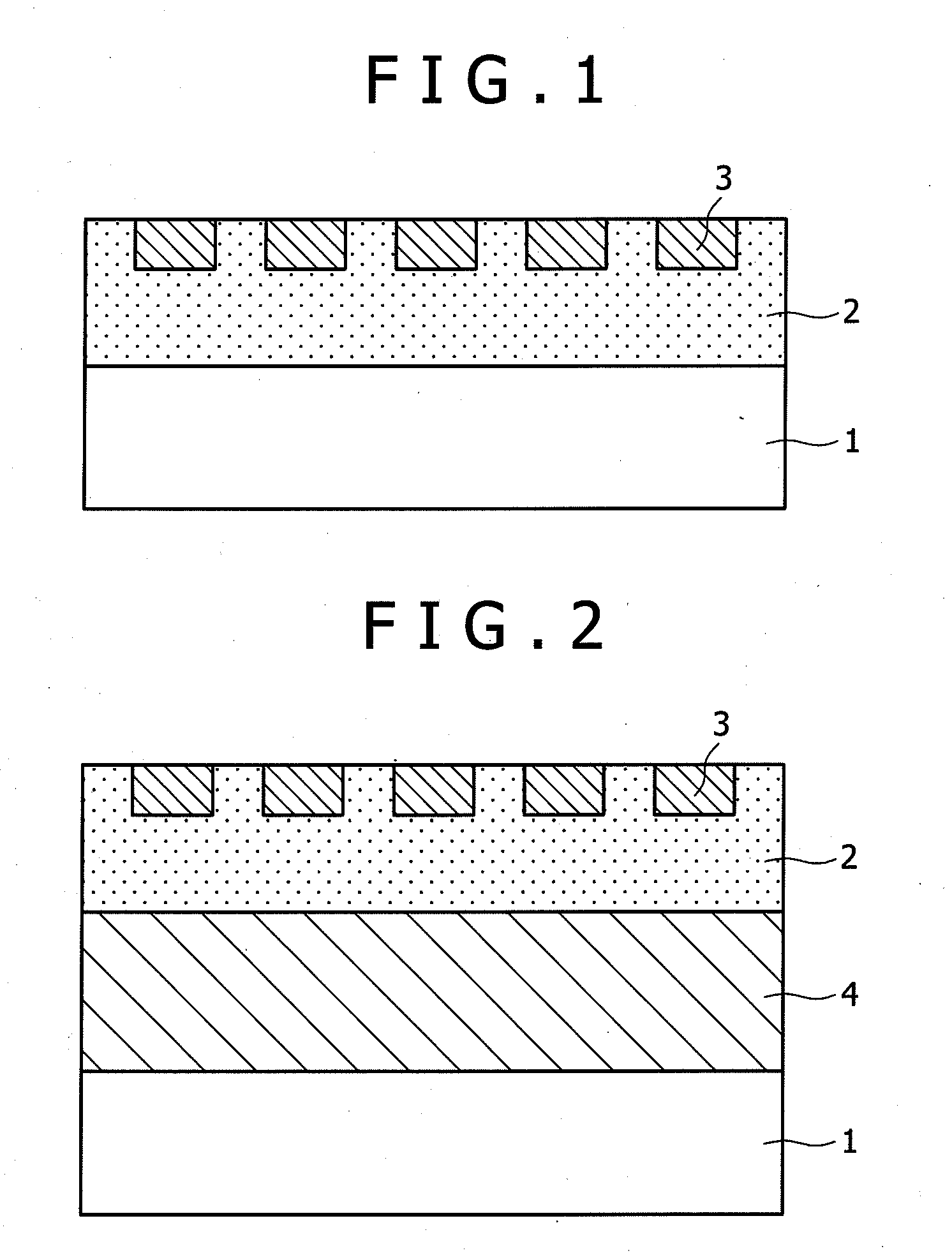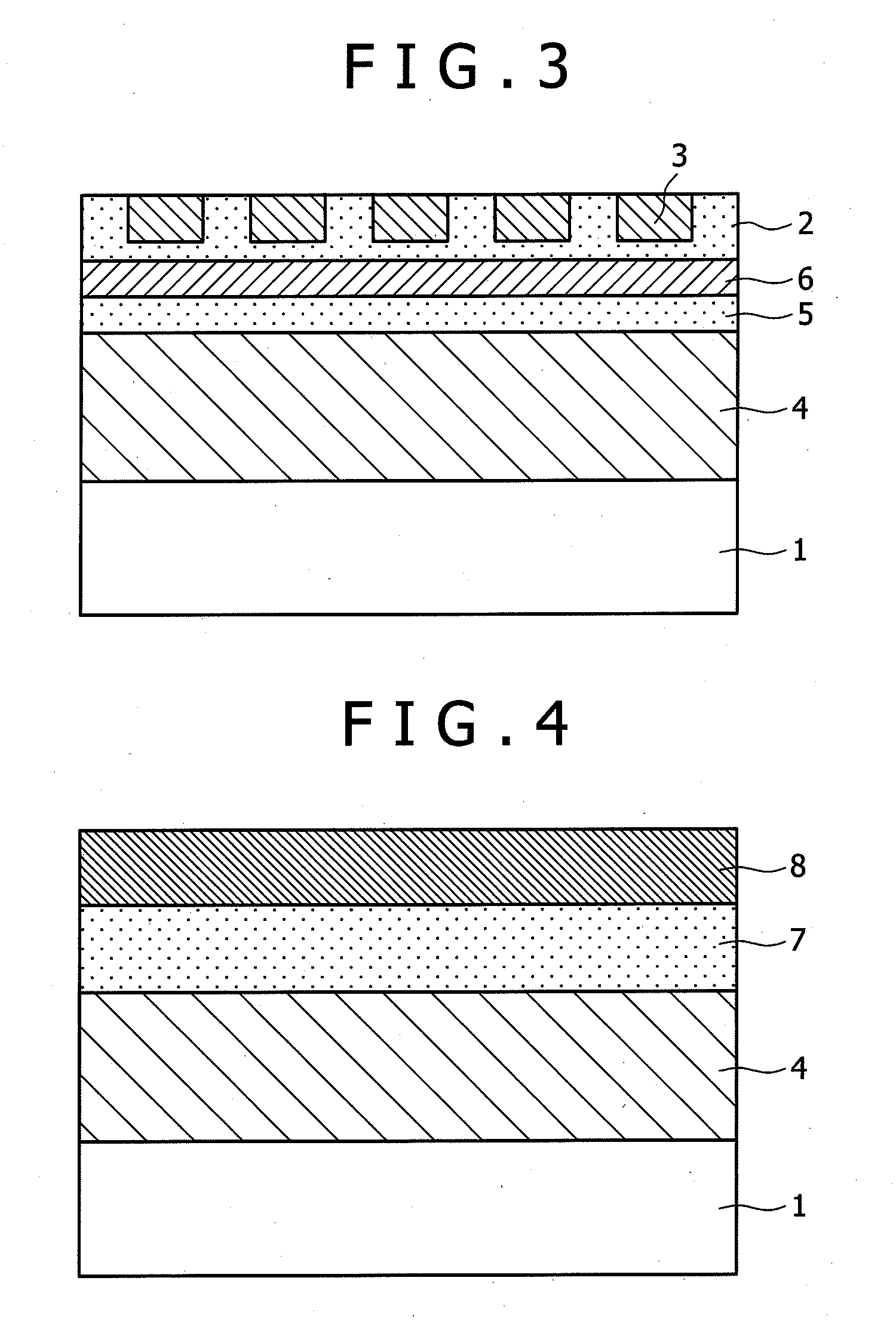Dot-patterned structure magnetic recording medium and method for production thereof
a magnetic recording medium and pattern technology, applied in the field of pattern structure and magnetic recording medium, can solve the problems of recording information disappearance, bit-to-bit variation and noise in reproduced signals, and the size reduction of magnetic particles is limited in the conventional magnetic recording media, and achieves good crystallinity, high reliability, and high functionality.
- Summary
- Abstract
- Description
- Claims
- Application Information
AI Technical Summary
Benefits of technology
Problems solved by technology
Method used
Image
Examples
first embodiment
[0039]FIG. 1 is a sectional view showing the magnetic recording medium according to the The magnetic recording medium is composed of a substrate 1, an underlying layer 2, and a dot-patterned recording layer 3, which are arranged sequentially on top of the other. The dot-patterned recording layer 3 should preferably be one which is formed by the steps of forming grooves on the underlying layer 2 by photolithography, filling the grooves with the same material as the underlying layer 2, and finally forming a magnetic film as the recording layer 3. In this way there are obtained the underlying layer and the magnetic film, both of which have good crystallinity with a minimum of mechanical damage.
[0040]The substrate 1 may be a glass substrate, aluminum substrate, or aluminum alloy substrate, for example. The recording layer 3 is formed from a magnetic alloy (such as CoCrPt), a granular magnetic alloy containing an oxide (such as CoCrPt—SiO2), or these materials containing additional elem...
second embodiment
[0051]FIG. 8 is a sectional view showing the magnetic recording medium according to the The magnetic recording medium is composed of a substrate 100, a soft magnetic layer 11, an underlying layer 12, and a dot-patterned recording layer 13, which are arranged sequentially on top of the other. The dot-patterned recording layer 13 should preferably be formed by the steps of forming pits in the underlying layer 12 by photolithography, filling them with the same material as the underlying layer 12, and finally forming a magnetic film as the recording layer 13. In this way there are obtained the underlying layer and the magnetic film, both of which have good crystallinity with a minimum of mechanical damage.
[0052]The substrate 100 may be a glass substrate, aluminum substrate, or aluminum alloy substrate, for example. The soft magnetic layer 11 is formed from iron alloy, nickel alloy, cobalt alloy, or the like, such as NiFe, FeTaC, and CoTaZr. The recording layer 13 is formed from a magne...
PUM
 Login to View More
Login to View More Abstract
Description
Claims
Application Information
 Login to View More
Login to View More - R&D
- Intellectual Property
- Life Sciences
- Materials
- Tech Scout
- Unparalleled Data Quality
- Higher Quality Content
- 60% Fewer Hallucinations
Browse by: Latest US Patents, China's latest patents, Technical Efficacy Thesaurus, Application Domain, Technology Topic, Popular Technical Reports.
© 2025 PatSnap. All rights reserved.Legal|Privacy policy|Modern Slavery Act Transparency Statement|Sitemap|About US| Contact US: help@patsnap.com



